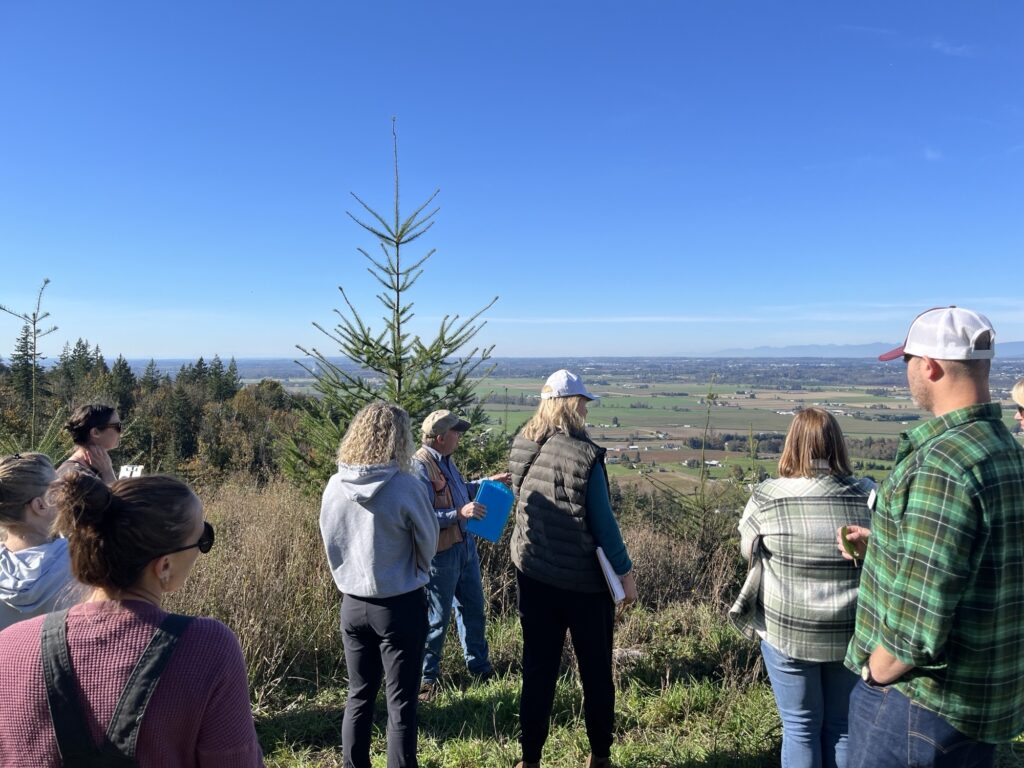Take a moment and look around your house. How many products would you estimate include some kind of tree product? Odds are that shampoo and windshields are not on your bingo card, but they are indeed made of wood products, as a group of educators at a K-8 Forest Literacy workshop learned.
The Whatcom Chapter of the Washington Farm Forestry Association hosted the workshop at Westergreen Family Farm. Owners Tom and Lisa Westergreen both have strong affiliations with Whatcom WFFA; Tom has been a member for over 50 years and serves as Inspector Coordinator for the Washington Tree Farm Program, and Lisa, a teacher at Nooksack Elementary School, is the co-vice chair of Whatcom WWFA. PEI’s Northwest FieldSTEM Coordinator Amy Keiper joined as a co-facilitator.
“The hands-on learning and experiences in the forest were amazing. I learned how to use the tools and had opportunities to collaborate with [grade-level] colleagues. The books and materials we were given are such great tools and easy to use for outdoor learning. I’m so excited to get back to school to offer these experiences to my students!”
— Workshop Participant

Participants heard from the Westergreens about the history of their privately owned forest land which they manage for different purposes, including economy, ecology, and the community. “We went out to tour the beautiful Westergreen farm and learned about Tom’s attentive care and management,” says Keiper. “He discussed the relationship between soils and tree type, how he decides when to thin, how he cares for the trees, and the thoughtful decisions that keep the surrounding ecosystem intact. Tom has deep care, respect, and knowledge of his trees and land. He wants everything to thrive while he is also caring for society and earning an income.”
Aside from discussing his own property, Westergreen explained the different management approaches to forestry on federal, state, and privately-owned land and the regulations that govern each sector. One startling fact: 78% of harvestable forest lands in Washington State are protected. The 22% that are open to commercial harvest operates under some of the most stringent regulations in the country, which means forestry professionals incorporate ecological considerations in their management and harvest practices.
For her part, Keiper introduced participants to nature journals as a strategy to address Next Generation Science Standards (NGSS). Teachers predicted how trees build their mass over time and drew models of their predictions. This activity led to a lesson on the carbon cycle and an understanding of how young trees sequester more carbon than older trees.
Participants left inspired and armed with new knowledge and tools for introducing their students to forestry concepts and practices. “The hands-on learning and experiences in the forest were amazing,” says one. “I learned how to use the tools and had opportunities to collaborate with [grade-level] colleagues. The books and materials we were given are such great tools and easy to use for outdoor learning. I’m so excited to get back to school to offer these experiences to my students!” Learn more about WFFA chapter goals and events here: https://www.wafarmforestry.com/whatcom.
